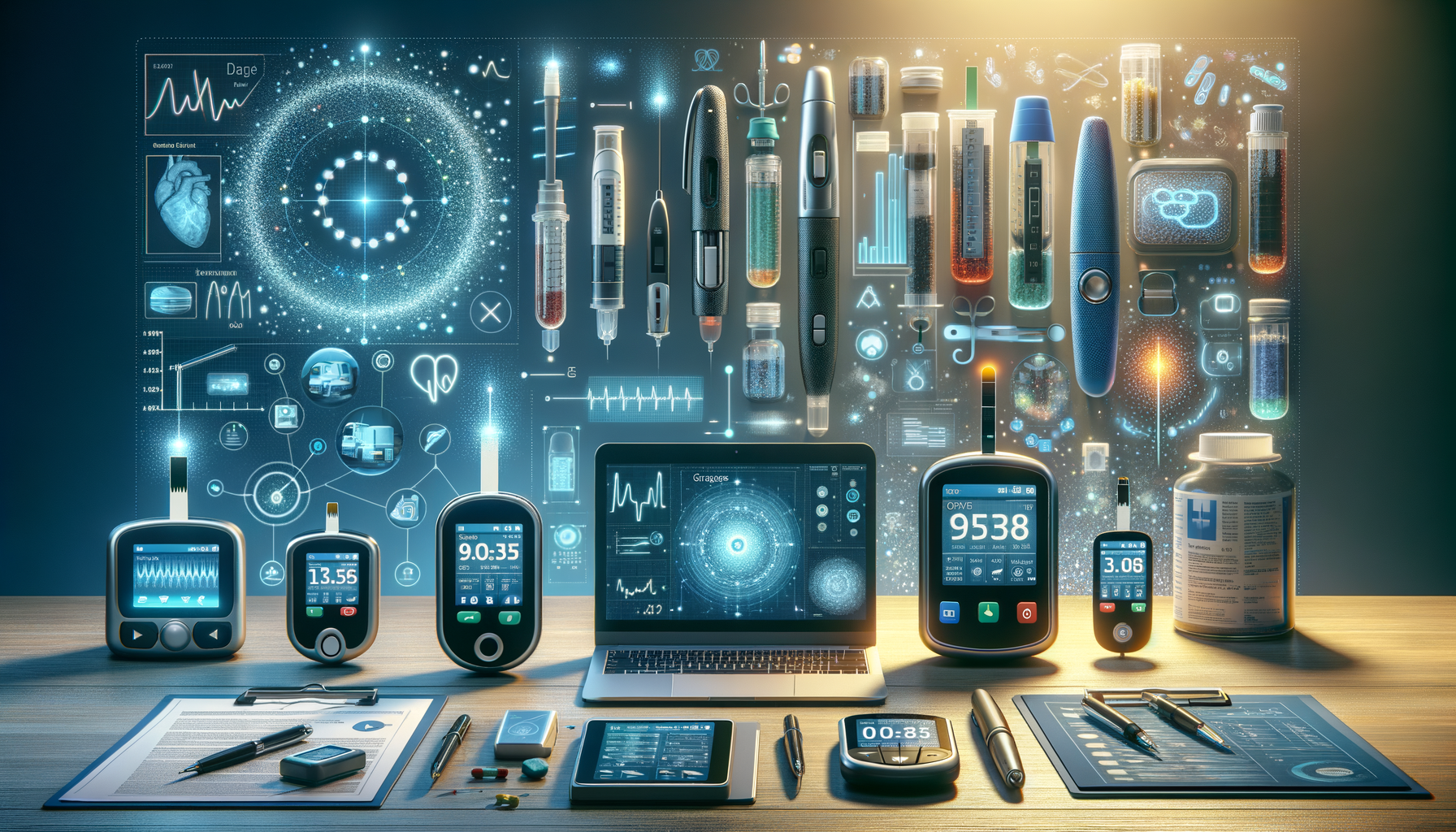The Evolution of Glucose Monitoring Devices
The journey of glucose monitoring devices has been remarkable, transitioning from primitive methods to sophisticated technology that enhances diabetes management. Initially, individuals relied on urine tests to estimate blood sugar levels, a method that was neither accurate nor timely. The advent of blood glucose meters in the 1970s marked a significant leap, providing more precise readings through blood samples. However, these devices required frequent finger pricks, which was inconvenient and sometimes painful.
In recent years, the development of Continuous Glucose Monitors (CGMs) has revolutionized the field. These devices provide real-time data, allowing users to track glucose levels continuously. Unlike traditional meters, CGMs use sensors placed under the skin to measure interstitial fluid glucose levels, offering insights into blood sugar trends and patterns. This innovation has been a game-changer, enabling proactive diabetes management and reducing the risk of complications.
Advancements continue with the integration of smartphone apps and cloud-based platforms, allowing users and healthcare providers to access data remotely. This connectivity fosters a collaborative approach to diabetes care, empowering individuals to make informed decisions about their health. As technology progresses, the focus remains on enhancing accuracy, convenience, and user experience, paving the way for a future where glucose monitoring is seamless and unobtrusive.
Continuous Glucose Monitors: A Closer Look
Continuous Glucose Monitors (CGMs) have become pivotal in diabetes management, offering a dynamic alternative to traditional glucose meters. These devices consist of three main components: a sensor, transmitter, and receiver. The sensor, inserted under the skin, measures glucose levels in the interstitial fluid. Data is then transmitted to a receiver or a smartphone app, providing users with real-time insights into their glucose levels.
One of the most significant advantages of CGMs is their ability to provide trend data. Unlike finger-prick tests that offer a snapshot, CGMs reveal how glucose levels fluctuate throughout the day. This information is crucial for identifying patterns and making necessary lifestyle adjustments. For instance, users can see how certain foods, exercises, or medications impact their glucose levels, enabling more precise management of their condition.
Moreover, CGMs often come with alert systems that notify users of high or low glucose levels, allowing for immediate corrective action. This feature is particularly beneficial for individuals who experience hypoglycemia unawareness, where symptoms of low blood sugar are not felt. By providing continuous feedback, CGMs enhance safety and improve overall quality of life for individuals with diabetes.
The Role of Artificial Intelligence in Glucose Monitoring
Artificial Intelligence (AI) is playing an increasingly important role in the advancement of glucose monitoring technology. By analyzing vast amounts of data, AI algorithms can predict glucose trends and provide personalized recommendations. This predictive capability is a significant step forward, as it allows for preemptive actions rather than reactive measures.
AI-driven platforms can learn from users’ historical data, identifying patterns and correlations that may not be immediately apparent. For example, AI can suggest optimal times for meals or exercise based on past glucose responses, tailoring advice to individual needs. This level of personalization is invaluable in managing diabetes more effectively and reducing the risk of complications.
Furthermore, AI can enhance the accuracy of glucose readings by compensating for variables such as temperature, humidity, and user activity levels. By refining data interpretation, AI ensures that users receive reliable information, fostering trust in the technology. As AI continues to evolve, its integration with glucose monitoring devices promises to unlock new possibilities in diabetes care, making management more intuitive and efficient.
Non-Invasive Glucose Monitoring: A Future Possibility
The quest for non-invasive glucose monitoring has been a longstanding goal in diabetes management. Traditional methods require blood samples, which can be inconvenient and uncomfortable. Non-invasive devices aim to eliminate this barrier by measuring glucose levels without breaking the skin.
Several technologies are under exploration, including optical sensors that use light to analyze glucose levels in the skin. Another approach involves electromagnetic sensors that detect glucose concentrations through the skin’s surface. While these methods are still in development, they hold promise for a future where glucose monitoring is entirely pain-free.
Non-invasive monitoring could significantly improve adherence to glucose testing, as the discomfort associated with finger pricks is a common deterrent. By offering a painless alternative, these devices could encourage more frequent monitoring, leading to better diabetes management. Although challenges remain in achieving the accuracy and reliability of traditional methods, ongoing research and innovation continue to push the boundaries, bringing us closer to a new era of diabetes care.
Challenges and Future Directions in Glucose Monitoring Technology
Despite the advancements in glucose monitoring technology, several challenges persist. One major hurdle is ensuring the accuracy and reliability of devices. While CGMs and AI-driven platforms have improved precision, discrepancies can still occur due to factors like sensor calibration and environmental conditions. Addressing these issues is crucial for maintaining user trust and ensuring effective diabetes management.
Another challenge is accessibility. The cost of advanced glucose monitoring systems can be prohibitive, limiting their availability to a broader population. Efforts to reduce costs and increase insurance coverage are essential to making these technologies more accessible to those who need them most.
Looking forward, the integration of glucose monitoring with other health technologies presents exciting possibilities. For instance, combining glucose data with wearable fitness trackers could provide a holistic view of an individual’s health, offering insights into how physical activity impacts glucose levels. Additionally, advancements in sensor technology may lead to longer-lasting devices that require less frequent replacement, enhancing convenience and reducing waste.
As we navigate these challenges, the future of glucose monitoring technology looks promising. With continued innovation and collaboration between researchers, healthcare providers, and technology companies, we can anticipate a future where managing diabetes is more seamless, effective, and empowering for individuals worldwide.




Leave a Reply